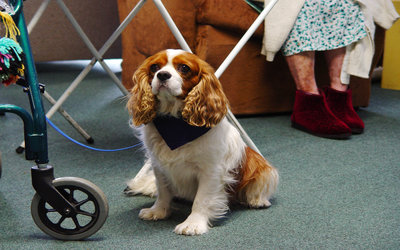Doctor Doglittle: Could You Benefit from Animal Therapy?
While guide dogs are so commonly used that you wouldn’t even think anything of it, you may be less sure about animal-assisted therapy (AAT). Otherwise known as pet therapy, this complementary wellness practice sees animals being trained to help you achieve specific physical, social, cognitive, and emotional wellness goals.
Though it sounds fairly unusual, people have been using animals to boost their wellbeing ever since the ninth century. In Gheel, Belgium, an assisted living programme designed for people with disabilities revolves around learning to care for farm animals, while animal-assisted healing has been more commonly used in the US for mental health problems. However, AAT has gained more of a formal presence in the last few decades, even being implemented in schools, prisons, hospitals, hospices, nursing homes, and outpatient care programmes.
So what are the benefits of owning a pet, or visiting a therapeutically-trained animal?
Heart Health – According to various studies, physical contact with a pet can reduce your high blood pressure, and improve your survival rate after a heart attack.
Happy Hormones – Evidence also shows that petting an animal can cause your body to release endorphins, which are the chemicals in your body that improve your mood and suppress the pain response.
Special Skills – With the assistance of a therapy animal, you can learn or improve in many different skills. If you need physical therapy after an accident or operation, walking, running or playing fetch with a dog can encourage your rehabilitation. Petting, grooming and feeding an animal can improve your motor skills, while giving verbal and physical commands, or writing and talking about therapy animals and pets, can enhance your communication.
However, you can’t just interact with any animal for it to qualify as AAT; practitioners and their animals are required to undergo a high standard of training to ensure you have a safe and positive experience. Although the pets are trained by volunteers, these volunteers will work with other medical professionals, and be fully trained to set you specific goals and track your progress. Plus, the animals themselves should be well trained to be around people, medical equipment and other animals, and should not get distracted by food and odours, chew inappropriate objects or mark territory.


Comments are closed.